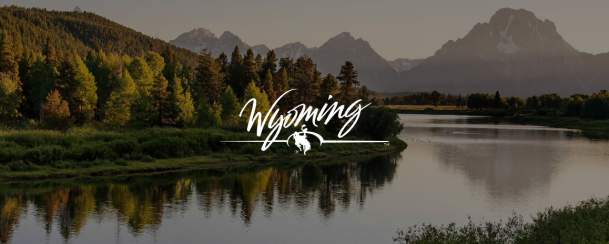Devils Tower — the iconic monolith in northeastern Wyoming — juts straight into the air, rising 1,200 feet from the grasslands near the Belle Fourche River. You can see this unimaginable pillar on the horizon from miles in any direction.
This geologic formation is so mesmerizing it’s no wonder that in 1906, President Teddy Roosevelt established it as the nation’s first national monument. Today, it’s a mecca for hikers and rock climbers seeking to marvel at its beauty and scale its steep walls. The sacred legend of Devils Tower, however, is just as varied and fascinating as its many visitors.
Why is it Called Devils Tower?

This tower’s rich history began long before settlers first laid eyes on it. You might be asking yourself, why is it called Devils Tower? The answer is that while it has been known by many names throughout generations, Devils Tower was an accidental title.
To the Lakota tribe, the tower is known as Mato Tipila (also Mato Mountain or Matȟó Thípila, pronounced mah-DOH tee-pee-la). The Cheyenne, Crow, Arapaho and Kiowa tribes (among others) have their own names for the tower, all loosely translating to Bear’s House, Bear’s Lair or Bear Lodge. For thousands of years, over a dozen Northern Plains and other Indigenous tribes have told stories about and held ceremonies under the shadow of this tower.
While each tribe has an interpretation of this remarkable formation, the bear-themed name permeates across the oral histories of Plains tribe members. In fact, the name “Devils Tower” — which came to be after a member of a scientific expedition misinterpreted the name Bear Lodge to “Bad Gods Tower” — does not accurately represent this sacred site. Local tribes wonder why it’s still called Devils Tower, and a proposal to change the name to Bear Lodge exists, but it can only occur by congressional action or a Presidential Proclamation.
When you plan a visit to this classic Wyoming destination, you will enrich your experience by learning and respecting the cultural significance of this sacred place.
The Origin of Bear Lodge

Dozens of narratives exist about the origin of Bear Lodge, passed down between tribe members for hundreds of years. One such story comes from the Crow Tribe.
Before the tower, two young girls were playing among large boulders in the area. Large bears populated this region; one saw the girls and charged forward, planning to eat them. The girls scrambled up to the top of the nearest rock, but they couldn't escape the bear. Then, the Great Spirit saw that the bear was about to catch the girls and caused the rock to grow tall, allowing the girls to escape the bear. The bear continued clawing at the tower but couldn't reach the top of the stone. You can still see the bear's claw marks, and the girls are still atop the tower.
Many other tribes have similar variations of this legend, most involving young children being chased by a giant bear and finding refuge on the tower that grew to keep them out of harm's way. In some accounts, the bear is named Mato, leading to the site being called Mato Tipila. Beyond the narrative differences in the legend of Devils Tower, one common thread is the belief in its mystical powers, providing divine protection over tribe members that spans generations.
Bear Lodge Remains a Sacred Site

Today, many return to the site to worship, fast and celebrate. Throughout the year — but especially in June — tribes perform ceremonies such as sweat lodges, vision quests and group rituals, like the Sun Dance.
When you visit, you may see colorful cloths or bundles adorning trees near the base of Bear Lodge. Tribe members leave these as personal prayer offerings or remembrances of a person or place. Please respect these sacred ceremonies and do not touch these objects.
Annual Rock Climbing Closure

Every year, thousands of climbers drive across the country to the phonolite porphyry walls of Devils Tower to climb the columnar pillars and intensive crack systems. But according to the National Park System, many tribe members consider climbing a desecration of a sacred site.
So, every June, the monument closes to rock climbing to recognize Bear Lodge as a sacred location. As tribes return to Bear Lodge for religious ceremonies in June, they can observe their spiritual practices without the noise and distractions that come with dozens of climbers high on the tower’s walls.
There is one caveat: this closure, which began in 1995 through the Climbing Management Plan, is entirely voluntary. The voluntary nature intends to build mutual respect between the climbing and native communities.
If these columnar walls call to you, please remember the importance of the legend of Devils Tower and respect the ban on climbing during the month of June. Climbing activist groups like Access Fund support the ban and request that you honor it.
Pro Tip: If you want to rock climb in Wyoming during June, consider Ten Sleep, Lander (Wild Iris and Sinks Canyon State Park), or Vedauwoo — all world-class destinations that don’t have a climbing ban.
